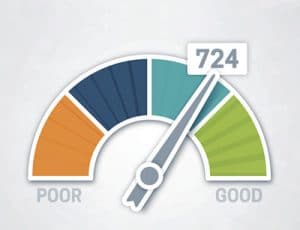Mortgage Repayments – 10 Sure Ways to Get Ahead and Stay Ahead
Introduction – Mortgage Repayments
One you have bought a property, whether as a home or an investment, you will be required to make mortgage repayments to cover the cost of the home loan.
These repayments can either be interest-only, which is what investors generally use, or principal and interest, which is a set amount designed to pay off the home loan within a specified period – usually 25 or 30 years.
Mortgage repayments can also be either via a variable interest rate or one that’s fixed at a certain interest rate for a specific period of time.
There is a huge variety of home loans available today as well as a large number of different lenders so it’s important that you do thorough research before you choose which product is best for your financial circumstances.
Pay Off Your PPOR and Use That Equity

For many homeowners, the goal is to pay down their property’s loan faster so they can save on the total interest payable.
Strategies to achieve this include paying more than is required every fortnight or month, for example if your repayments are $2,000 consider paying $2,200 or more; you can also make lump sum payments, perhaps from a tax return or cash bonus; there is also the option of off-set mortgage accounts to lower the overall interest component of the loan, which over time will reduce the time required to pay back the loan.
By opting to pay down the loan faster, the equity in your home will increase at a faster rate than what capital growth or renovations can achieve. By building up the equity in your home, you may then be able to access some of these funds to buy an investment property, which can provide significant tax deductions.
Home equity may serve as collateral for a home equity loan or home equity line of credit, however, it’s vital that you remain diligent with its use and not access these funds for frivolous spending or buying a non-appreciating asset like a car.
It’s important to understand, however, that it’s usually not a good idea to pay off an investment property loan quickly because it’s only the interest component that is tax deductible. If you sell the property you might also increase your Capital Gains Tax liability if you have paid down the loan too much.
Make Repayments More Frequently
A strategy which many homeowners use to pay off their principal place of residence faster is to increase the number of loan repayments.
The default for many home loan products is a monthly repayment schedule, which of course equals 12 repayments per year. A better option may be switching to a fortnightly repayment schedule, which is 26 repayments a year and means additional month’s repayment over the course of the year. This works particularly well for people whose salaries are paid fortnightly.
Consider this scenario: Say your monthly repayments are $2,000. By the end of the year, you’ll have repaid $24,000 (not accounting for interest). If you change this to $1,000 a fortnight, by the end of the year you’ll have repaid $26,000. How? Because there are 12 months in a year and 26 fortnights. Effectively you squeeze in an extra month each year. Over the life of your loan, this can shave a couple of years off how long it takes you to repay the mortgage.
Make Larger Repayments

Another good option is to make larger repayments than are required each month or fortnight. By paying extra, either regularly or whenever you can afford too, you will reduce the principal and interest component of the loan and therefore reduce the time it takes pay off your property.
Let’s take a look at this scenario a little more closely. Say Helen and John have a $500,000 loan over 30 years at an interest rate of five per cent. The standard monthly repayment would be $2,684. If they can afford to top up this amount with $500 extra every month it will not only lop nearly nine years off their loan term, but they’ll save a whopping $152,000 in interest over the life of their loan!
Pay Off the Principal Amount Early
When your mortgage is first drawn down, naturally your repayments will be at its highest level. In fact, for the first years if you just pay the minimum repayments, it can sometimes seem you’re not really paying it off at all. This is because the interest component of the loan is the majority of the repayment so you’re only repaying a small proportion of the principal.
This is why it’s also a good idea to try to pay down the principal amount early and you can do this by paying lump sum repayments early into the life of the mortgage. Just like additional regular repayments, you will be able to reduce the size of your loan faster if you can make other cash deposits as well in the early days of owning the home.
Let’s consider another example. John and Peter again have a $500,000 home loan over 30 years and on a five per cent interest rate. After the first year, John receives a $15,000 inheritance and instead of spending it on a holiday he deposits it into their home loan account. Just this one-off additional repayment will reduce the couple’s interest bill over the life of the loan by some $45,000 and cut nearly two years off the loan length!
It’s important to understand any fees that might be associated with making additional repayments, so it’s always better to select loans that allow you to repay the balance faster at no penalty cost.
Open a Redraw of Offset Account

Another way to repay your home loan more quickly is to consider redraw or offset mortgage accounts.
A redraw facility enables you to deposit any spare income you have directly into your home or investment loan account. You can then redraw from the loan account any funds that are in excess of your regular repayment schedule. This can be a useful strategy for homeowners but less so for investors as it may have tax implications.
Another option is to consider a mortgage offset account, which is an account linked to your home loan into which you deposit additional funds, such as your salary, that reduces the amount of interest on the mortgage payable given interest is calculated daily. For example, if you have $20,000 sitting in an offset mortgage account, this will deducted from the interest component of your home loan, yet is still available to be used by you at any time, if you so wish.
Utilise Split Interest Rates
When deciding on the best repayment strategy for your personal financial circumstances, it’s important to recognise if you’re a risk-adverse type of person.
Mortgages with variable interest rates means that the interest charged on your home loan can fluctuate depending on policy decisions by the Reserve Bank of Australia and/or rate changes by your lender. This means that your repayments can increase or reduce depending on whether interest rates rise or fall.
Some homeowners feel better with the security of regular repayments so choose a fixed rate loan, such as five per cent, which they agree to pay no matter what happens to interest rates.
If you’re finding it hard to choose between variable and fixed interest rates, then another option available is splitting your home loan, locking in a portion while the remainder is left variable.
This will mean that the portion that is fixed will not be subject to any changes in the market, while the variable portion will allow you to take advantage of features like an offset account. For example, if Lauren decides to split her $500,000 home loan with a 60:40 ratio, $300,000 would be fixed while $200,000 would be variable.
Look Around

There are a huge number of home loan and mortgage providers in Australia today, but not all of their products are created equally.
There has also been an increase in the number of smaller lenders, which are starting to secure market share in the home loan sector.
In fact, data analysis from financial comparison website RateCity has shown that one in six borrowers are choosing to bank with smaller lenders in preference to one of the Big Four banks.
This could be due to a range of competitive rates, discounts and incentives offered from smaller players, which have given them an edge in the market.
Over the past few decades, in particular, there has been a rapid increase in the use of mortgage brokers to help buyers and investors source the very best home loan for their requirements.
It’s important to do thorough research into the home loan products on the market today as well as access expert advice to help guide you in the right direction.
Get A Package
Most of the home loans available today also offer other products in a package to homeowners and lenders.
Features of home loan packages vary from lender to lender but many have products that can save you money, which in turn can be used to pay down your mortgage faster.
These often can include fee-free credit cards, discounted home insurance, lower loan interest rates and no loan establishment fees.
Stay on Top of Other Finances

Every Australian has a credit rating. This three-digit score is calculated by independent credit reporting bodies (CRBs) who use data from every bank and financial institution in the country.
Having an overdrawn bank account, missing credit card repayments, and even falling behind on your rent can all negatively impact on your credit rating and can ultimately mean the difference between a home loan being approved or denied.
Take your time and make sure you have all the facts and information on your side. That includes accessing your individual credit report. It will add some further time and effort to an already complex and exhausting process, but knowledge is power and the benefits – whether you have a ‘good’ credit score or a ‘poor’ one – are worth it.
Lose the Little Luxuries
For many people, buying a home will be the single largest financial transaction they make in their lives so it makes sense that it becomes one of your priorities to pay back the mortgage as quickly as possible.
While most first homebuyers have to scrimp and save and do without to pull together the deposit, sometimes people forget that their home loan can still benefit from such a financially astute attitude once they’ve bought the property.
This article has been about how to repay your mortgage more quickly but there is one thing that we haven’t mentioned and that is how those additional repayments can be created.
Once you have a mortgage, you must consider the long-term ramifications of your short-term decisions. So perhaps think about whether that new car, bought with a high interest loan, is really necessary when a second-hand car paid with cash will mean you can invest those saved funds into your home loan and be mortgage-free sooner rather than later.
Intuitive Finance – the smart choice
As this article has outlined, there are a number of ways that you repay your mortgage faster and potentially save tens of thousands of dollars in unnecessary interest. Having a professional team on your side could make all the difference to your success. Now more than ever, you need investor savvy people working on your financial side.
The world of banking and finance can be a pretty daunting one for both novice and sophisticated investors and since our establishment in 2002 we’ve focused on providing outstanding service and business standards.
This approach was vindicated when we were recently named Victoria’s favourite mortgage broker at the 2015 Investors Choice Awards.
Whether you are a homeowner or investor for expert advice on the variety of mortgage repayments options and home loans available, contact Intuitive Finance to ensure you start with the right information and expert support on your side.
Further reading
For more information on how to repay your home loan quicker, and save on interest, consider the following resources:
- Calculate how you can pay off your home loan more quickly
- How to pay off your mortgage faster
- Three ways to pay off your home loan quicker to be financially free
- Common mortgage mistakes first‑home buyers still make in 2026 - January 5, 2026
- 2025 review: rate cuts, record prices and the rise of the first-time buyer - December 11, 2025
- Offset accounts and split loans: How they work and when they save you money - December 9, 2025
